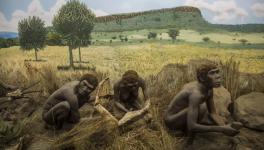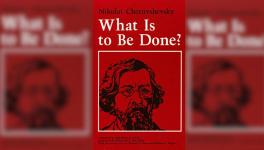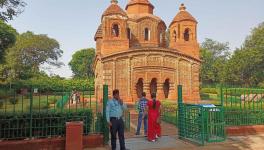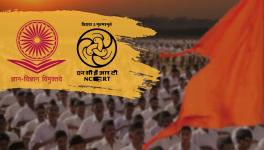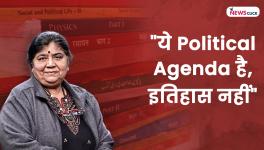The Unknown Democratic-Republican Ethos of 1857
The revolt of 1857 is usually remembered as the First War of Indian Independence. It is associated with heroic figures such as Mangal Pandey, Rani Lakshmibai, Bahadur Shah Zafar, Nana Sahib, Begum Hazrat Mahal, Tatya Tope, Azimullah Khan, Kunwar Singh, and Maulavi Ahmadullah Shah. The main reason for the Great Revolt is also usually understood as the introduction of new greased cartridges rumoured to contain cow and pig fat.
It is generally believed Hindu and Muslim soldiers considered these an attack on their religion and thereby revolted against the East India Company, making the revolt a symbol of Hindu-Muslim unity. It is also generally believed that the rebel soldiers had no political programme or ideology except to oust the British. However, recent historical research has shown that the above events are either untrue or only partially true. For example, the Indian sepoys who rebelled against the East India Company used those very rifles and cartridges that supposedly sparked the revolt in response to hurt religious sentiments.
The Indian sepoys revolted because of their exploitation, such as non-payment of salaries, cutting of allowances, miserable working conditions and, crucially, the racial discrimination faced during service at the hands of British officers. To delegitimise the revolt, the colonial historians portrayed the rebel soldiers as unruly and barbarians lacking clear purpose or vision. Unfortunately, many Indian historians have followed this colonial narrative. The political agenda of the rebels needs to be a part of public knowledge: they were not just people with guns looking for blood but conscious political actors.
A mutiny broke out in the Meerut garrison on 10 May 1857, and rebel soldiers marched to Delhi on 11 May and proclaimed Bahadur Shah Zafar as the Emperor of India. Following the capture of Delhi by rebel soldiers, Zafar assumed control of Delhi and nearby areas, but it proved a difficult task for the 82-year-old. Yet he attempts to proactively lead the revolt, as historian Amar Farooqui has said in his book, “Zafar and the Raj”.
Things changed when General Bakht Khan of the Bareilly Brigade arrived in Delhi on 1 June and took control of Delhi on 3 June, with the blessings of Zafar. His arrival led to one of the most intriguing developments in the 1857 revolt. His first concern was to impose order in the city and prepare for battle against the company forces building up at the outskirts.
Khan and his advisors, in consultation with Zafar, formed a military council that released a six-page document. It can also be considered a “constitution” of the new state they were planning to build. It contained a twelve-point programme issued by the military council that provides insights into the nature of the revolt and the mindset of the rebels.
To govern Delhi, the military council established a “court of administration” of ten members. Of these, six were to be elected from three departments of the military; two each from the infantry, cavalry and artillery. The rest (four) were to be elected from civilians. Elections to the court were to be “by a majority vote from amongst intelligent, wise, capable and experienced men who had also to their credit a record of past faithful service”.
The ten-member committee was to elect a president and a vice-president. The president had two votes and all other members one vote, including the vice-president. Further, each member was in charge of the department they were elected from and assisted by a committee of four from the court members. Committees were meant to deliberate and make proposals that, once passed by a majority, were presented to the court.
The court held two kinds of sessions at the Red Fort. One concerning the general affairs of the state and the second regarding matters especially concerning the ongoing war. The court also assumed all civil and judicial functions and defined its role as “to administer the state, maintain peace and order, collect land revenue from the sub-divisions and raise loans from the Mahajans, defend the realm and prosecute the wars”. In the course of the revolt, the rebels established courts of administration in Lucknow and other places. Their authority was symbolically subordinated to the Delhi court.
An undated document, “Parwanah”, issued by the military council, shows that republican and democratic values inspired the rebellion of 1857, at least in Delhi, Lucknow and some other places. The rebels tried to outline the structure of a “new state” rather than restore the Mughal Empire or the eighteenth-century successor states. As Prof. Farooqui argues in his other study, the 1857 Revolt in Delhi, “...the evolution of the sipahi government at Delhi did contain seeds of modern democracy.”
According to Farooqui, the roots of this embryonic modern state lay in “the informal soldiers’ councils within units of the company’s army which in the pre-revolt period had been forums for deliberating upon various issues concerning the sipahis. It was a combination of features derived from these councils, combined with features of traditional panchayats, and had ingredients of whatever the sipahis knew about British constitutional monarchy and parliamentary procedure.” It does not seem far-fetched for two reasons: one, the sepoys were peasants in uniform, and two, the sepoys were most probably introduced to ideas of democracy and republicanism when they participated in company’s wars in different parts of the world.
More Hidden Facts
The revolt of 1857 was a multi-dimensional and long-drawn struggle in which a range of actors from different parts of the Indian subcontinent participated. It is generally believed that the revolt began from Meerut, spread to Delhi, Lucknow, Kanpur, Jhansi and Bihar before being crushed by the British. Scholars argue that it did not spread in Punjab or the Madras Presidency and that these were the major reasons for its failure.
Interestingly, Prof. Shamsul Islam of Delhi University, in his book, “Rebel Sikhs of 1857”, demonstrates how not only did the Sikh regiments based in Punjab revolt against the British, but the entire Punjab rose against the company. There is a famous well in Ajnala near Amritsar where the dead Punjabi rebel soldiers were brutally dumped by the British forces (of course, the actual number of Indians mercilessly killed by the British while suppressing the revolt is unknown).
It is only to maintain the image of a “loyal Punjab” that the British historians hid the fact that the province actively participated in the revolt. Recent scholarship argues that the revolt even spread amongst the tea plantation workers of North Bengal and Assam, amongst the tribes of the North-East and also in southern India. Hence, contrary to popular belief, it certainly had a pan-India character. Similarly, it is said in the history textbooks that the revolt began in 1857 and ended in 1859 with the hanging of Tatya Tope. Yet, as historian Amaresh Mishra has recently argued, it continued for a few more years.
Most renowned scholars argue that the revolt was organised by the elite caste sepoys. However, recent researchers have shown the contribution of Dalit participants such as Uda Devi Pasi, Jhalkari Bai, Matadin and several others. Even the role played by well-known leaders of the revolt has not been properly studied. Several writers have claimed that Lakshmi Bai was only a reluctant participant in the revolt, especially because of the letters she wrote to extending her support to the British in the initial days of the revolt. These scholars overlook that she led the revolt quite heroically for around a year. She did not just seek to free Jhansi—which was later offered back to her by the British—but for an idea of India that researchers need to explore.
There are many more hidden aspects of the revolt that need exploration, such as the “long march” of guerrilla leader Kunwar Singh (recognised by Marx himself!). This task is unfinished even after 165 years of the momentous event. The most crucial reason for this is the near-complete dependence on colonial accounts produced by British writers. There is a need for alternative sources—such as the memoirs of Vishnu Bhatt, who travelled in North India during the revolt, the dairy of Mirza Ghalib, innumerable folk songs and tales on the revolt—to narrate a far more comprehensive history of 1857.
Prabal Saran Agarwal and Harshvardhan are PhD scholars at JNU. The views are personal.
Get the latest reports & analysis with people's perspective on Protests, movements & deep analytical videos, discussions of the current affairs in your Telegram app. Subscribe to NewsClick's Telegram channel & get Real-Time updates on stories, as they get published on our website.












